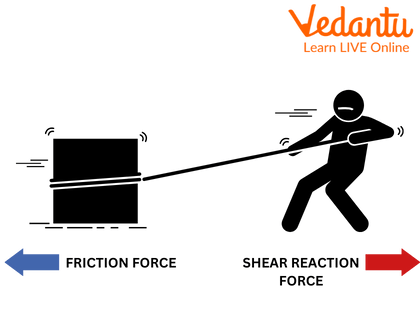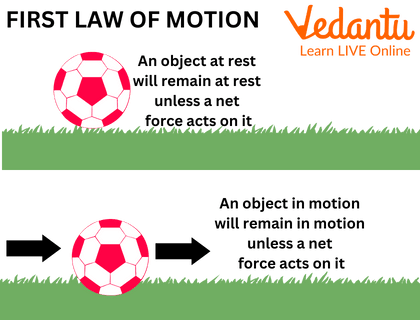




Must-know Facts About Motion in Physics
Any object or body which changes its place or position with respect to the time is said to be in motion. For example, even in our day-to-day life, we walk or drive cars, or lift objects. Performing all these tasks requires the input of some type of force. This force was first described scientifically by Issac Newton and we study it under a branch of physics termed Mechanics.
In this article we will learn about motion, the laws of motion as given by Issac Newton and then some fun and interesting facts about motion and its laws followed by learning a few facts about circular motion.

Motion in Physics
Common Facts About Motion
Any type of motion requires at least some kind of force as an input.
Force can be defined as a phenomenon that pushes or pulls any object.
An object which is in motion, for example when we drive a car, experiences a repelling force from the ground known as friction.
Friction is helpful because it helps the car in slowing down and eventually stopping.

Force and Friction
Fun Facts about Newton’s Laws of Motion

Sir Issac Newton
There are three laws of motion and these were given by Newton.
Isaac Newton is also the founder of calculus.
The first law talks about inertia and will be discussed in detail a little later in this article.
The second law gives the relation between the force applied and the momentum of a body.
The third law is termed as the action reaction law; it states that for every action there is an equal and opposite reaction.
It said that Newton discovered gravity when an apple fell on him while he was sitting under an apple tree.
What Is the First Law of Motion?
The first law of motion as given by Isaac Newton is known as the Law of Inertia. Inertia is a repelling force that resists the motion of any object in consideration. The law states that when a body is at rest it will remain at rest until an external force is applied to it. It also states that a body in motion will remain in motion until some external force is applied to it to stop its motion.

First Law: Law of Inertia
The tendency of a body to remain in its state, may it be a state of rest or state of motion, and avoid any changes is known as inertia. We mainly have three different types of inertia:
Inertia of Rest
Inertia of Motion
Inertia of Direction
Facts About Circular Motion

Example of Circular Motion
Some facts about circular motion are mentioned below:
When a body is moving in a circular path, it is said to be in a circular motion.
Some examples of circular motion are: when you walk around the circumference of a circular park or garden and the earth that revolves around the sun.
We have two types of circular motion: uniform circular motion and nonuniform circular motion.
During circular motion, as the body is moving along a circular path, it has a constant speed throughout its motion. This is defined as uniform circular motion.
However, the velocity changes direction at every point of motion. We say that the speed of the body is constant but the velocity of the body is not constant.
In non uniform circular motion, speed is changing with time.
Sample Questions
State whether the statements mentioned below are correctly stated or not:
1. The laws of motion were given by Isaac Newton.
Ans: True, the laws of motion were given by Issac Newton.
2. There are in total five laws of motion.
Ans: False. There are in total three laws of motion
3. We study motion and its characteristics in the subject called Chemistry.
Ans: False. We study motion and its characteristics in a subject called Physics.
4. Circular motion is when an object is covering a circular path.
Ans: True, circular motion is when an object is covering a circular path.
5. In a uniform circular motion, both the speed and the velocity of the object are constant.
Ans: False, in a uniform circular motion the speed is constant but the velocity keeps on changing.
Practice Questions
Complete the statements that follow but fill in the blanks with the most suitable answer:
1. Motion is studied under a branch of physics known as _________
Ans: Mechanics
2. There are _______ laws of motion
Ans: 3
3. The laws of motion were given by __________
Ans: Isaac Newton
4. The first law of motion is the law of __________
Ans: Inertia
5. Action Reaction law is the __________ law of motion.
Ans: Third
6. The _________ is constant in uniform circular motion.
Ans: speed
Summary
Whenever an object on a body changes its location with respect to the time, it is said to be in a state of motion. For any body or object to start its motion, some type of external force is required as an input. Sir Isaac Newton gave three laws of motion which are studied under a branch known as mechanics in Physics. The first law is the law of inertia and the second law gives the relation between the force applied and the motion of the body. The third law is known as the action-reaction law. A body is said to be in a circular motion when it is moving along a circular path. We have two different types of circular motion: uniform circular motion and non-uniform circular motion.
FAQs on Facts About Motion - Learning About Newton’s Laws of Motion
1. What is motion and how do we know if an object is moving?
An object is described as being in motion when its position changes over time relative to a fixed point, also known as a reference point. We know an object is moving by observing its change in location compared to stationary objects in its surroundings, like a bus moving past a building.
2. What are Newton's three laws of motion in simple terms?
Newton's three laws of motion are fundamental principles that govern how objects move. They are:
- First Law (Law of Inertia): An object will not change its state of motion (either at rest or moving at a constant speed) unless an external force acts on it.
- Second Law (Law of Acceleration): The force on an object is equal to its mass multiplied by its acceleration (F = ma). This means more force is needed to move a heavier object.
- Third Law (Law of Action-Reaction): For every action, there is an equal and opposite reaction.
3. Why is Newton's first law also called the Law of Inertia?
Newton's first law is called the Law of Inertia because it describes an object's inherent resistance to any change in its state of motion. This property is called inertia. An object with more mass has more inertia, which is why it's much harder to start or stop a heavy truck compared to a small toy car.
4. Can you provide a real-world example of Newton's third law of motion?
A great example of Newton's third law is swimming. When a swimmer pushes the water backwards with their hands (the action), the water pushes the swimmer forward with an equal and opposite force (the reaction). This reaction force is what propels the swimmer through the water.
5. How does Newton's second law apply when we throw a ball?
When you throw a ball, Newton's second law (F=ma) is in action. The force (F) you apply with your arm causes the ball, which has a certain mass (m), to accelerate (a) from your hand. If you throw the ball harder (more force), it accelerates faster and travels at a higher speed. Similarly, throwing a heavier ball with the same force would result in lower acceleration.
6. What is circular motion and is an object in circular motion accelerating?
Circular motion is when an object moves along a circular path. Yes, an object in circular motion is always accelerating, even if it moves at a constant speed. This is because acceleration is the rate of change of velocity, and velocity includes direction. Since the object's direction is constantly changing as it moves along the circle, its velocity is changing, and therefore it is accelerating.
7. What is the key difference between speed and velocity?
The key difference is that speed is a scalar quantity that tells you how fast an object is moving (e.g., 50 km/h). In contrast, velocity is a vector quantity that tells you both the speed and the direction of movement (e.g., 50 km/h North). An object's speed can be constant while its velocity changes if its direction changes.
8. Can an object be in motion if no net force is acting on it?
Yes, absolutely. According to Newton's first law, an object will maintain its state of motion if the net force acting on it is zero. This means if an object is already moving, it will continue to move at a constant velocity (constant speed and direction) forever unless a force like friction or air resistance slows it down. A zero net force means there is no acceleration, not no motion.









